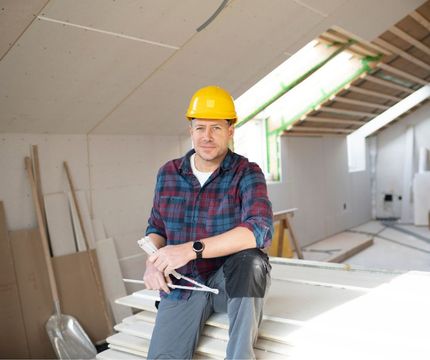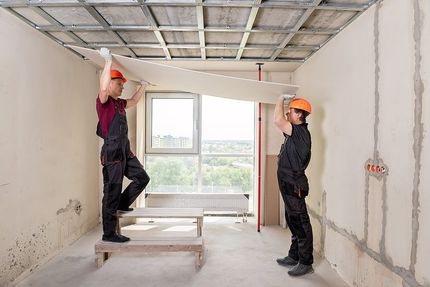Affordable Drywall Repair Options for Your Fort Worth Building
Affordable Drywall Repair Options for Your Fort Worth Building
Blog Article
Full Guide to Effective and Dependable Drywall Installment
Drywall setup is an essential part of any kind of building or remodelling job, demanding a meticulous strategy to guarantee both effectiveness and dependability. Comprehending the essential tools and methods is extremely important, along with identifying usual pitfalls that can cause below average results. By carefully preparing the space and applying best techniques, one can achieve a perfect finish that stands the test of time. It is vital to check out the subtleties of each step in the process, as they collectively add to the general success of the drywall setup. What certain techniques can boost your strategy?
Crucial Tools for Drywalling
When getting started on a drywall setup project, having the right tools is essential for achieving an expert coating. Necessary devices consist of a drywall blade, tape step, and a T-square, which are fundamental for accurate dimensions and smooth cuts. A drywall lift is also highly advantageous, particularly for ceiling setups, enabling easier handling of hefty panels.
For securing the drywall, a cordless drill and drywall screws are essential. The drill needs to be equipped with a drywall little bit to make sure effectiveness and precision. Furthermore, a key tool is the drywall saw, which facilitates cutting around electrical outlets and other barriers.

Additionally, safety gear such as safety glasses and a dust mask are necessary to make certain individual safety throughout the setup process. Utilizing the right tools not just improves the quality of the setup yet likewise streamlines the workflow, making the task more reliable total.
Preparing the Space

Following, examine the problem of the ceilings and wall surfaces. Repair any kind of existing damages, such as openings, splits, or peeling paint, to ensure a smooth and even surface area for drywall application. Additionally, look for electric outlets, plumbing lines, and heating and cooling ducts, noting their places to avoid problems during installation.
It is also critical to measure the room precisely, identifying the dimensions of the ceilings and wall surfaces to compute the appropriate amount of drywall needed. Create an in-depth plan that consists of the format and positioning of the drywall panels.
Installation Methods
Efficient installment methods are essential for achieving a professional surface in drywall tasks. Proper measurement and cutting of drywall sheets are basic actions.
When hanging drywall, begin with the top and work downward, ensuring that the long side of the board is vertical to the framework. Protect the sheets with screws instead of nails, which provide greater holding power and minimize the threat of popping. Place screws every 12 inches along the sides and every 16 inches in the field of the board.
For edges, utilize corner grains to achieve sharp, tidy edges. When setting up on ceilings, use a drywall lift or have a companion assist in holding the sheets in place (drywall fort worth). Preserve a void of about 1/4 inch over the floor and ceiling to fit expansion and contraction
Finishing Touches

When the tape is in place, Bonuses it's time to apply the first layer of joint compound, also known as mud. Use a 10 to 12-inch taping blade to spread out the compound uniformly over the taped joints, feathering the edges to mix with the bordering drywall.
Permit the compound to completely dry completely, generally 24 hours. After drying out, sand the surface area lightly with fine-grit sandpaper to remove any kind of flaws. drywall repair. Repeat the mudding and sanding procedure, normally 2 to 3 coats, guaranteeing each layer is flush and smooth with the drywall surface
Common Blunders to Stay Clear Of
Many DIY enthusiasts experience mistakes during drywall setup that can compromise the final outcomes. One usual mistake is falling short to effectively reduce and measure drywall sheets.
An additional constant mistake is incorrect fastening. Using also few screws or nails can cause loosened drywall, while overdriving fasteners can create the paper to tear, compromising the structure. It's important to keep constant spacing, normally every 16 inches, and to ensure that bolts are flush with the surface area.
In addition, not dealing with moisture problems prior to installation can result in mold growth find more info and architectural damages. Always examine the environment and usage moisture-resistant drywall in high-humidity locations.
Final Thought
Trustworthy and reliable drywall setup needs meticulous interest to information throughout the procedure. By making use of vital tools, preparing the area sufficiently, and sticking to ideal practices in setup techniques, a flawless coating can be attained. In see this here addition, careful application of joint substance and tape throughout the finishing stage enhances resilience and look. Preventing common errors even more adds to a specialist outcome, highlighting the significance of accuracy and method in successful drywall jobs.
It is vital to discover the nuances of each action in the process, as they collectively add to the overall success of the drywall setup.When embarking on a drywall setup project, having the right tools is crucial for accomplishing a professional surface.For securing the drywall, a cordless drill and drywall screws are needed.Effectively preparing the space is important for an effective drywall setup.Effective setup strategies are critical for accomplishing an expert surface in drywall jobs.
Report this page